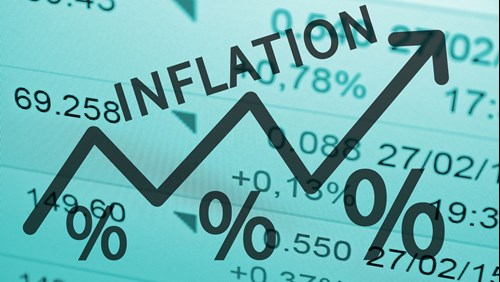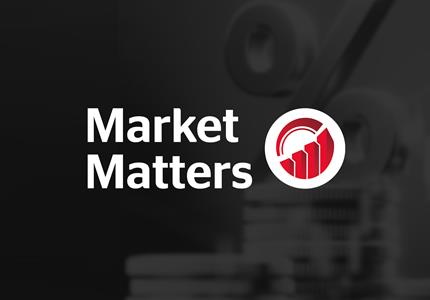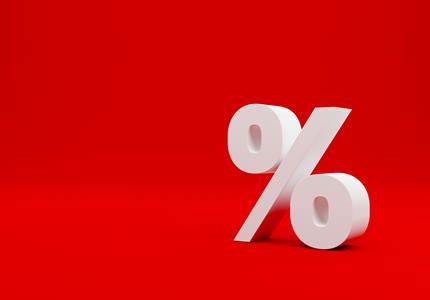

Boscher's Big Picture - A regime change is underway for the global economy
We are experiencing a regime change in the global policy mix. Since the early 1980s, when Margaret Thatcher and Ronald Reagan embarked on an economic transformation and Paul Volcker assumed the helm at the Fed, central banks, led by the Fed, have used monetary policy to fight inflation and achieve their secondary goal of full employment. The last 40 years have seen monetary policy dominant and fiscal policy recessive. Central banks would typically tighten policy into a recovery to choke off excessive demand, whilst governments would aim to reduce the budget deficit in the “good times”. One of the effects of this was that the dollar tended to strengthen into recoveries and less dollars flowed outside of the US, causing Emerging Markets and commodities to deflate and pushing the global financial system into a disinflationary and US dominated expansion.
The last two decades
The global economy has also been slowing in nominal and real terms since 2000 with much of this due to secular factors such as ageing demographic and falling productivity in developed economies as well as a slowing China. This has added to the disinflationary pressures, with other strong secular trends also at play including the ageing demographic, excess savings over investment, globalisation, technological disruption across many sectors and industries and rising global debt levels. Many of these remain firmly in place today.
As US inflation peaked in 1980 and has been steadily falling since, this has allowed sovereign bond yields to also decline, supporting both credit and equity markets. Falling inflation and growing disinflationary pressures have led to the Fed (and other central banks) becoming more sensitive to weak growth and financial market tensions given their inflation mandate. In turn, they have tended to respond more aggressively with reflationary policies every time we have had an economic or financial problem, especially over the past two decades. The example of Japan struggling to break out from deflation highlights how difficult it is to escape the trap and the threat of Europe and maybe the US going the same way is very real.

A change in tack to tackle global debt
Global debt levels have also been rising at a rapid rate and now stand at record levels at over 400% of GDP, compared to approximately 280% in 2008. Each dollar of debt is delivering less and less growth, making it harder to grow out of the problem and increasing the risk of falling into a debt trap. At the same time, with the Fed and other central banks keeping rates low and flooding the system with liquidity, they are keeping “zombie companies” alive, destroying productive investment and capital and adding to disinflationary forces by lowering real growth and adding to excess supply across many industries. These economic trends are now showing up in growing political unease and unrest, mainly because the middle class in developed economies have seen falling living standards and per capita income for a long time, whilst the inequality gap between the wealthy and poor is growing larger. Environmental issues are also a factor. Examples of this include growing global populism, the votes for Brexit and Trump and the rise of extreme left and right wing parties.

These developments, together with the Covid-19 induced recession, is forcing policymakers in the developed economies, in particular, to change tack and Keynesian policies are now in the ascendency – renowned economist the late John Maynard Keynes advocated increased government expenditure and lower taxes to stimulate demand and pull the economy out of depression. We are likely in the early stages of a move to make fiscal policy more dominant with governments set to spend and invest huge sums of money for the next few years in order to raise productivity and nominal growth. This will result in very large fiscal deficits and higher government debt. At the same time, central banks will have little option other than to finance the increased fiscal spending whilst keeping interest rates extremely low across the yield curve in order to ensure that governments, businesses and consumers can easily finance the growing debt burden. The alternative is too unpalatable for policymakers; a deflationary bust, huge business failures and debt defaults, rising unemployment, a severe recession/depression, rising political tensions and social upheaval. Eventually the system would clear and a new economic boom would follow but the wealth destruction suffered in the meantime would be immense.
The sustained fiscal deficits and the persistent Fed stimulus will ensure that there are strong trade and financial flows of US dollars outside of the US and throughout the cycle. This is a fundamental requirement for global reflation since the excess dollars add to aggregate demand in the global trading system and finance the supply chains that feed global trade. In addition, the dollar liquidity encourages increased investment in emerging markets and allows their policy makers to ease their own monetary and fiscal policies, which in turn raises growth, asset and currency returns in the region. This should ensure that the global financial system remains in a reflationary boom for a sustained period. It also means that the main risks investors face are no longer a sharp tightening of liquidity, weaker growth and a deflationary bust. Instead, the risk becomes that persistent and strong reflationary pressure results in rising and uncontrollable inflation. Of course, this has major implications for financial markets and the likely “winning” investment strategy for this new environment.

Inflation
Advanced economy headline inflation rates look set to rise above 2% in the coming months due to the base effects of rising energy and other commodity related prices. However, the background picture is that core price pressures remain subdued in the developed world and the secular disinflation trends remain powerful. In addition, high levels of unemployment and excess capacity after the pandemic will restrain inflation, whilst it is also probable that the digitalisation of economies will proceed at an even faster rate.
Longer-term, inflation is highly likely to accelerate, largely as a result of the global regime change from monetarist inflation-targeting central banking to Keynesian demand management, financed by money printing. Other factors supporting higher inflation include de-globalisation tensions, political pressure for income redistribution and higher wages, rising commodity and energy prices, an appreciating Chinese yuan and supply side disruption leading to higher input costs. Finally, with the Biden-led US (and other) governments increasingly pursuing the “green agenda”, this will lead to rising costs in a number of areas; higher utility bills, car and other transport costs and energy prices.
We should also remember that inflation is a psychological phenomenon as well as a measure of prices. Everyone has been used to falling or low prices for a long time and it becomes ingrained in the behaviour of consumers, companies and traders. Once this psychology changes and inflation expectations start to rise, it becomes a self-reinforcing process. If people perceive that inflation will pick up, they start to move forward purchases, hold less cash and demand wage rises. Companies, expecting higher input costs and selling prices, will start to hold more inventory and working capital.
Eventually, I expect inflation to accelerate for all of the reasons outlined above and as aggregate global demand starts to exceed supply and as bank lending and the velocity (circulation) of money start to accelerate. Once the psychology changes, and the behaviour of consumers and business alters accordingly, then higher inflation is likely to become a persistent theme. In the meantime, the current policies and excess liquidity are likely to continue to show up in asset price inflation until either real economic activity rises or inflation picks up. Importantly, central banks, led by the Fed will be very tolerant of higher inflation and will look through any short-term and temporary rise in headline rates over the next few months. Indeed, central banks will welcome rising inflation in order to boost nominal growth, move further away from a deflationary debt trap and alleviate the very large and growing global debt levels. They also remain committed to keeping interest rates and bond yields around current levels for the next few years in order to ensure the economy recovers to its pre-Covid path and to support fiscal policy and financial assets.

The impact on investments
Consequently, I do not expect sovereign bond yields to rise materially over the next year or so even if inflation rises above 2% and global growth rebounds strongly. If correct, this will continue to support credit and equity markets. Care is required though, since bond yields are almost certainly in the final stages of a near 40-year bull market and have probably bottomed for this cycle. The risk for bond markets is changing, although it will likely be several years before yields rise materially and cause a problem for credit or equity markets.
If the macro environment pans out as expected, this should continue to be positive for equities. Strengthening growth, plentiful liquidity, accommodative central banks and reasonable valuations in many markets are all positive factors. Equities also look very attractive relative to bonds and cash, especially as inflation starts to rise. Although I remain optimistic on the outlook for equities over the next few years, I acknowledge that there are definitely worrying signs of speculation and froth in some areas of the US market. These include a surge in margin debt, very high multiples on the growth areas of the market, extremely strong new listing activity, retail investor mania and Bitcoin. Although it is difficult to see what might cause a significant correction, the combination of concerns over rising yields, the delayed economic recovery and the signs of excess is a signal that equities may suffer a correction at some point soon.
From an equity perspective, Ravenscroft’s long-term themes including technology, healthcare, environmental and emerging markets remain very attractive. However, it is also prudent to add some exposure to more cyclical and value areas of the market, since the aggressive reflationary policies are conducive to market leadership shifting towards these areas from growth over the next year or two or maybe even longer. Also, mega cap tech stocks are facing growing headwinds including increased regulation and higher taxes.
Commodities, including gold, are likely in a multi-year bull market as growth accelerates, corporate investment increases, the dollar continues to weaken and inflation eventually starts to rise. I also expect oil to trade at a higher average price (than the past few years) over the next cycle, although the “green agenda” and US shale industry will likely cap the price. I expect the dollar to continue to depreciate on a trade- weighted basis given the growing twin deficits, increased fiscal expansion and plentiful dollar liquidity flowing overseas. In addition, US assets no longer offer a yield advantage relative to Europe and Japan.
![]()
The key to performance
In this environment, the passive “index tracking” approach or momentum style, which has done so well over the past decade, is less likely to work as well. Instead, stock, market, geographic and sector allocation/selection will probably be key to relative and absolute performance. Quality of individual stocks remains very important as over-leveraged companies will eventually face rising financing costs whilst input prices are also rising including commodity, freight and transport, and eventually wage. Not all companies will be able to pass these costs on to consumers, even when inflation starts to rise. Price setters will do better than price takers in this environment.
Given our views, we believe it is sensible to add some inflation protection in portfolios, including US TIPS and gold, in case inflation picks up quicker than expected. We are also increasing our exposure to real assets and infrastructure, in particular, given that these assets should protect against rising prices whilst also benefitting from increased government investment. As already mentioned, we are also increasing our weightings to value and cyclical stocks in order to position for a likely change in equity market leadership once economic growth really starts to improve. Finally, should we experience a short-term move lower in equities, then this would present an opportunity to add to equites in preferred areas, since the macro fundamentals remain supportive and the underlying price trends are positive.


